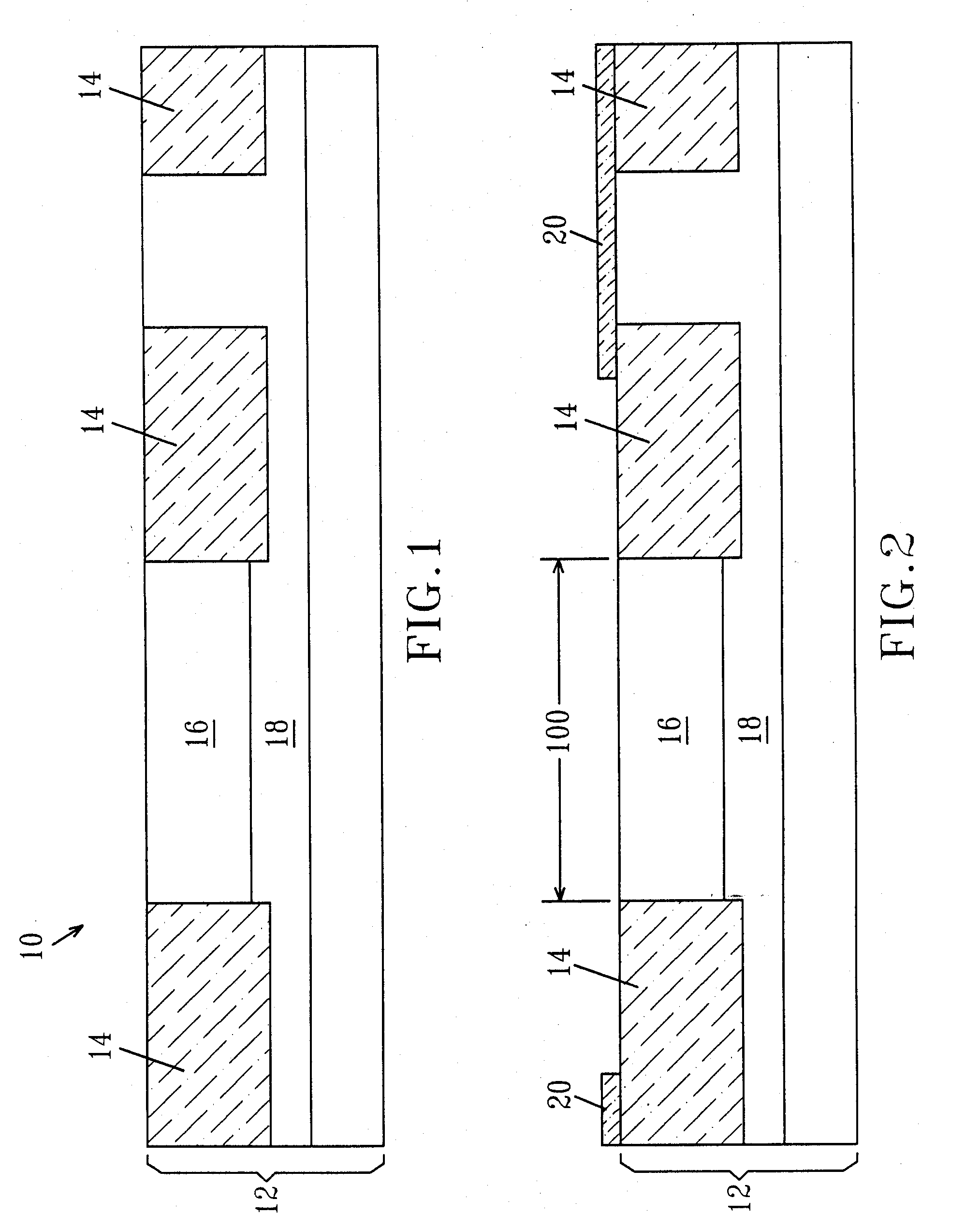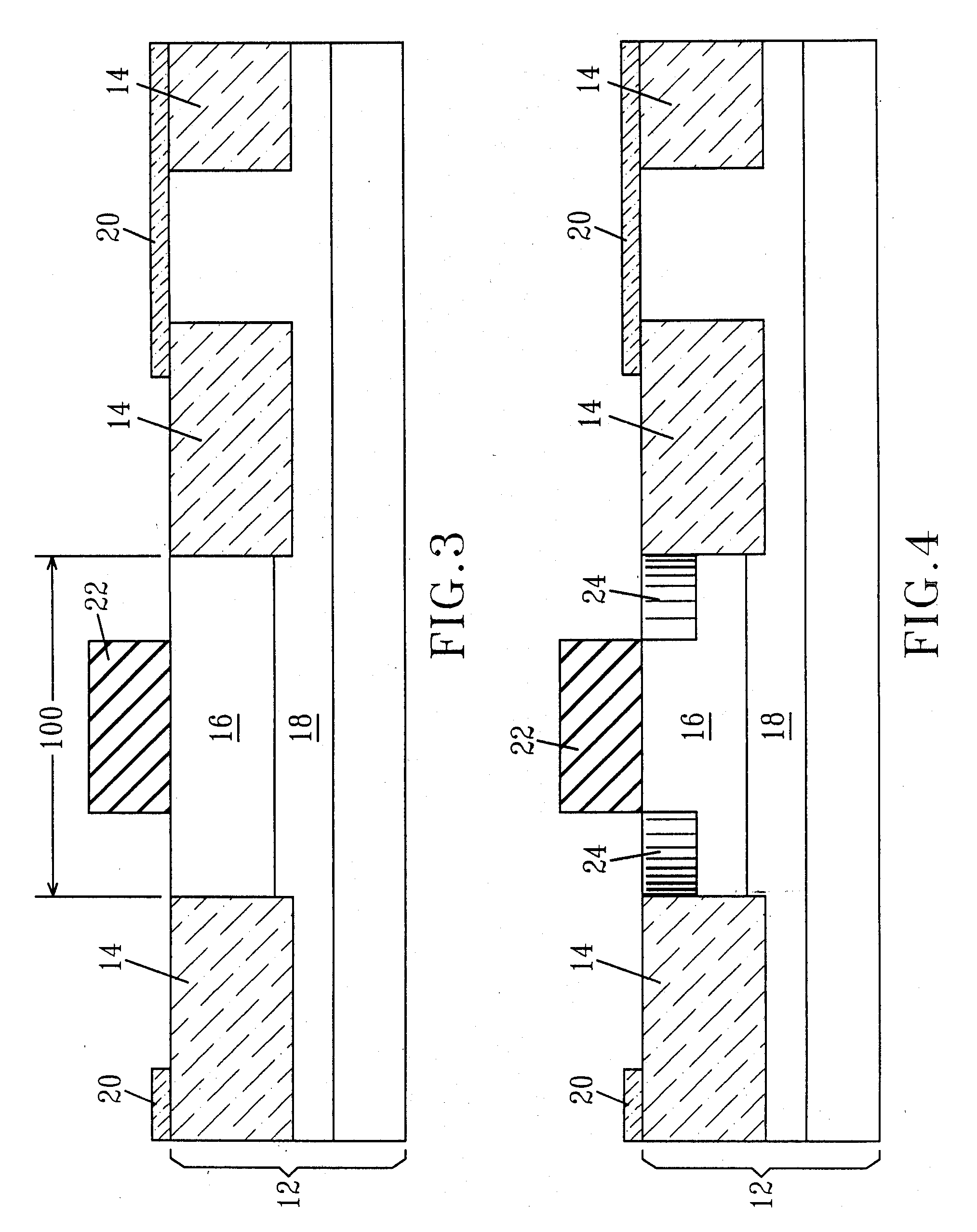BIPOLAR TRANSISTOR WITH COLLECTOR HAVING AN EPITAXIAL Si:C REGION
a bipolar transistor and collector technology, applied in the field of bipolar transistors, can solve the problems of serious device operational limitations, achieve the effects of reducing parasitic ccb, controlling carbon profile and location, and suppressing the out-diffusion of collector implant dopants
- Summary
- Abstract
- Description
- Claims
- Application Information
AI Technical Summary
Benefits of technology
Problems solved by technology
Method used
Image
Examples
Embodiment Construction
[0029] The present invention, which provides a bipolar transistor with a collector having an epitaxial Si:C region and a method of fabricating the same, will now be described in greater detail by referring to the drawings that accompany the present application. The drawings are provided for illustrative purposes and thus they are not drawn to scale.
[0030] The inventive method of forming a bipolar device with a collector having an epitaxial Si:C region begins with first providing the initial structure 10 shown in FIG. 1. The initial structure 10 includes a Si-containing substrate 12 having trench isolation regions 14 formed therein. The Si-containing substrate includes any semiconductor material that includes silicon. Illustrative examples of such Si-containing semiconductor materials include, but are not limited to: Si, SiGe, a silicon-on-insulator (SOI), or a silicon germanium-on-insulator (SGOI). Alternatively, the Si-containing substrate 12 may be a Si layer such as epitaxial Si...
PUM
 Login to View More
Login to View More Abstract
Description
Claims
Application Information
 Login to View More
Login to View More - R&D
- Intellectual Property
- Life Sciences
- Materials
- Tech Scout
- Unparalleled Data Quality
- Higher Quality Content
- 60% Fewer Hallucinations
Browse by: Latest US Patents, China's latest patents, Technical Efficacy Thesaurus, Application Domain, Technology Topic, Popular Technical Reports.
© 2025 PatSnap. All rights reserved.Legal|Privacy policy|Modern Slavery Act Transparency Statement|Sitemap|About US| Contact US: help@patsnap.com



